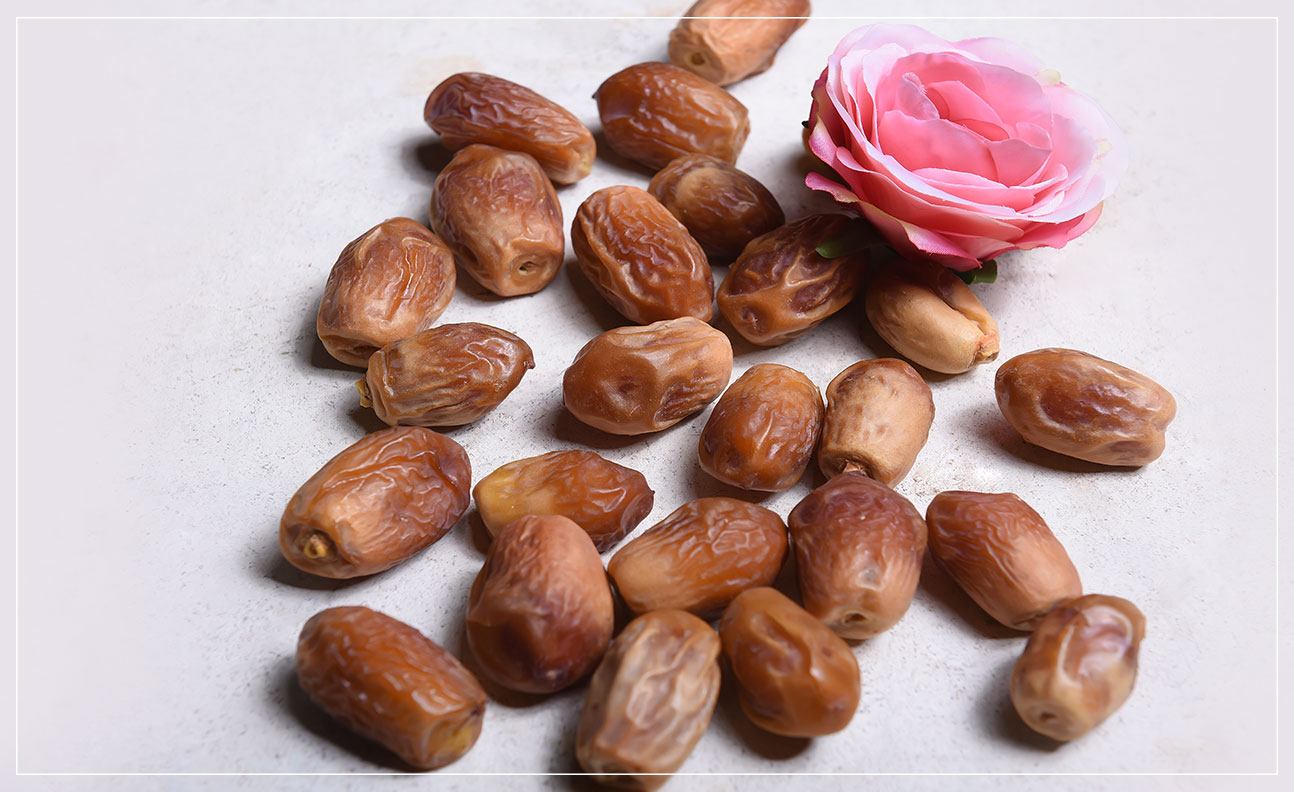Zahedi Dates

Popular for its nutritional value, the Zahid and Zahedi dates, or the ‘date fruit’ as it is also known, are grown throughout Egypt. Considered to be one of the tastiest of all Egyptian fruits, the Zahedi dates have an earthy taste with hints of plums, peaches and nectarines. The skin of the fruit is slightly dry, semi-firm, and chewy in texture, and a mild nutty, buttery and woody flavor with a hint of apricot. Zahedi dates are high in dietary fiber and are rich in nutrients.
Zahid and Zahedi dates are both native to the southern part of Egypt, but they now grow abundantly in the delta. The palms tend to be bushy, with large leaves that contain numerous spines and needle-like branches. The fruits are small and round with a distinctly oval shape, with the commonest being round and brown in color. The interior flesh is thick, succulent and brownish in color, and contains a distinctly sweet, buttery and woody taste.
Considered an edible variety of date, the Zahedi dates are available in two forms. Fresh, unroasted, and dry; these dates can be eaten as normal, or with an added dose of honey. The most popular form is dry roasted, which has a firm, crunchy texture and a brown color, usually darker than the original honey. This is the kind of date that you’ll find in regular supermarkets. The other kind, which is technically considered to be a dessert rather than a fruit, is soft and brown in color when fully ripe, and has a mellow, somewhat woody flavor.
Since it’s so close in shape to the original honey, the semi-dry sort of Zahedi dates has a distinct, rich taste that some find irresistible. It also goes by the name “honey wheat.” One advantage of semi-drying these types of sweet dates is that they retain much of their freshness and flavor, which is why they’re a good choice for baking and cooking. They’re also a good choice for preserving food for later on.
The semi-dried form of Zahedi dates is slightly sweeter than its fresh counterpart, with a rich golden color that’s closer to caramel. It also has more of a chewier texture, thanks to the dried out nature of its starch core. It offers a slightly different flavor than the Zahedi variety, with a slightly looser and more subtle flavor. It’s a very good snack for people who need a little something extra for a quick pick-me-up between meals.
One of the most popular forms of these dates is called Medjool dates, which are harvested from the wild and come in a number of shapes. These dates have a very distinct, chewy texture and rich, sweet flavor. They’re typically used as a traditional dessert by Middle Eastern cuisine, though they’re increasingly popular among mainstream consumers, too. They make an excellent alternative to dates for those who don’t like to indulge in sweets all the time, as Medjool dates tend to be quite mild in their sweetness.
The semi-dried variety of Zahedi dates is one of the simplest and sweetest varieties. They’re relatively dry, but their flavor is distinctly nutty. Medjool dates aren’t as sweet as Zahedi dates, but they’re just as delicious and if savored correctly can even be considered dessert. This is due in part to the distinctive, lightly nutty flavor of the fruit. If you prefer your desserts with slightly more dessert than focus on a sweet or semi-sweet taste, then these semi-dried Zahedi nuts are the ones for you.
When buying semi-dried Zahedi and Medjool dates, remember that they’re sold as nuts so, you’ll want to look at the label carefully. If it says “date palm” on the bag, then you know it’s got at least some semi-dry qualities. Try and buy semi-dried Zahedi and Medjool dates straight from the supermarket. They’re much easier to find this way and you’re guaranteed to get a sweet, healthy treat with little effort.